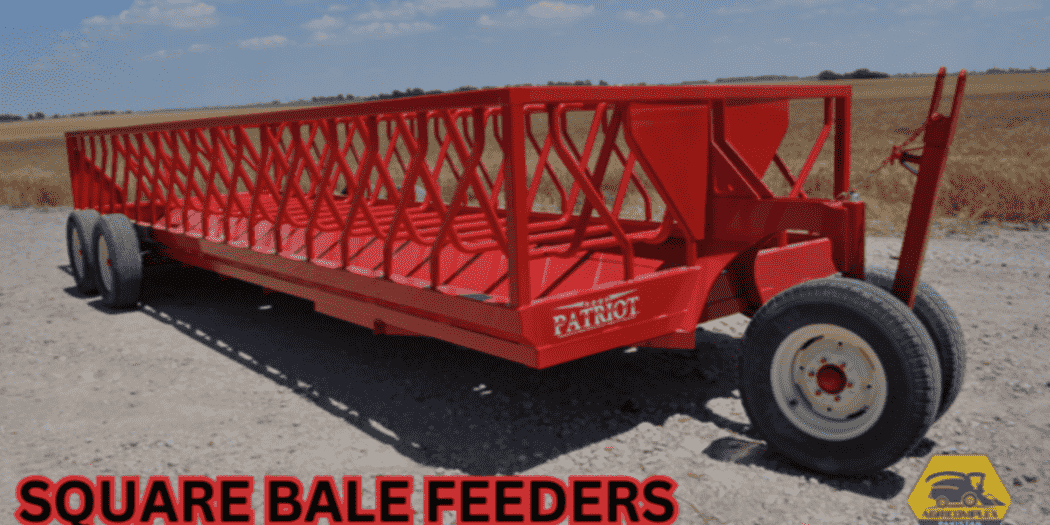Square Bale Feeder
Have you ever walked onto a farm and noticed those structured feeders safeguarding hay bales? Yep, those are square bale feeders. Their primary aim is to minimize hay wastage while providing livestock with consistent feed access. It’s not just about holding hay but ensuring it remains fresh, free of contaminants, and easily accessible.
Table of Contents
Large Square Bale Feeders
Benefits for Larger Farms
Big farms mean bigger livestock numbers. Larger feeders cater to these needs, reducing the frequency of refilling. They’re an investment that pays off in saved time and reduced hay wastage.
Common Materials Used
Mostly, these feeders are made of galvanized steel or high-quality plastic. Durability is paramount, especially when exposed to outdoor conditions year-round.
Square Bale Hay Feeders
Importance of Preserving Hay Quality
Hay quality is paramount for livestock health. A well-designed feeder prevents moisture build-up, thus preventing mould growth. It’s not just a storage unit but a quality preservation tool.
Factors Influencing Choice
The type of livestock, the local climate, and available space all play roles in choosing the right hay feeder. No one-size-fits-all here!
Square Bale Feeder for Horses
Horse-Specific Features
Horses have specific feeding habits and needs. Horse-specific feeders often have features like anti-bolt bars to prevent overeating or mechanisms to slow down feeding.
Safety Precautions
Ensuring feeders have no sharp edges or parts where a horse could get caught is crucial. Safety first, always!
Big Square Bale Feeders
Advantages over Regular Sizes
Greater capacity, reduced refill frequency, and often more features. These are built for efficiency on a larger scale.
Installation Tips
Placement is key! Ensure stable ground and, if possible, an area shielded from harsh weather.
Small Square Bale Feeders
Suited for Smaller Livestock Operations
Not every farm needs a colossal feeder. Smaller ones are perfect for modest operations or specific livestock groups.
Space-Saving Features
Compactness with all essential features. These are designed for functionality within limited spaces.
Diverse Materials and Designs
Durability and Lifespan
High-quality materials mean a longer lifespan. Investing more upfront can save costs in the long run.
Weather-Resistance
Outdoor equipment needs to withstand the elements. UV-resistant plastics and rust-proof metals are commonly used.
Square Hay Feeders
Special Considerations for Dry Regions
In arid areas, preserving the limited moisture in hay is crucial. Designs cater to this need, ensuring minimal evaporation.
Ideal Forage Preservation
These feeders cater to farms where hay is the primary forage. Their design aids in maintaining hay quality.
Purchasing Considerations
Affordability Vs. Quality
While budgeting is essential, quality should be maintained. A balance ensures long-term benefits.
Brand Recommendations
There are market leaders renowned for quality. Researching and seeking recommendations can guide purchasing decisions.
Maintenance and Care
Routine Checkups
Regular inspections for wear and tear and timely repairs can extend a feeder’s lifespan.
When to Replace
If you notice excessive rust or large breaks, or if the feeder no longer serves its primary purpose, it might be time for a replacement.
Eco-Friendly Feeders
Sustainable Materials
With environmental concerns rising, many manufacturers are adopting sustainable materials like recycled plastics.
Benefits for the Environment
Reduction in wastage and use of sustainable materials can significantly reduce a farm’s carbon footprint.
Are you a dedicated livestock owner looking to optimize your feeding routine? Look no further than the Square Bale Feeder. This ingenious solution is tailor-made for farmers and ranchers who want to streamline their feeding process and provide top-notch care to their animals.
Key Features and Benefits for Farmers and Ranchers:
- Efficiency: The Square Bale Feeder simplifies feeding, allowing you to save valuable time and resources. No more hassling with loose hay; load square bales into the feeder, and it does the rest.
- Cost-Effective: Say goodbye to wasted hay. This feeder reduces hay waste significantly, ensuring you get the most out of every bale and maximizing your budget.
- Durability: Crafted from rugged materials, this feeder is built to withstand the elements and the rigours of daily farm life. It’s a long-term investment that will serve you season after season.
- Safety: Your animals’ well-being is paramount. The Square Bale Feeder’s design minimizes the risk of injury, keeping your livestock safe during feeding.
- Easy Maintenance: Cleaning and maintaining the feeder is a breeze, allowing you to focus on what matters most—caring for your animals.
| PROS | CONS |
|---|---|
| Time-Saving: Effortlessly feed your animals, saving you precious hours each day. | Initial Cost: While it pays off in the long run, the upfront investment may be steep for some. |
| Cost-Effective: Reduce hay waste and cut down on feed expenses. | |
| The durable construction guarantees longevity. | |
| Safety First: Minimizes the risk of injuries to your livestock. | |
| Low Maintenance: Spend more time with your animals and less time on upkeep. |
Conclusion
Square bale feeders, whether big or small, for horses or general livestock, play an integral role in modern farming. Investing in the right one not only ensures livestock health but also translates to savings in time and resources. Happy feeding!
Frequently Asked Questions (FAQ’s)
What is the average lifespan of a square bale feeder?.
Typically, with proper maintenance, they last between 5-10 years, depending on material and usage.
Can one feeder serve multiple livestock types?
Yes, but it’s recommended to choose a design catering to the specific needs of the livestock in question.
How do I clean and maintain my feeder?
Removing leftover hay, checking for damage, and cleaning with appropriate cleaners should suffice.
Is there a risk of livestock injuring themselves?
Quality feeders are designed with safety in mind, but regular checks for potential hazards are advised.
How does a feeder prevent hay wastage?
Providing a structured space prevents hay from spreading, getting trampled, or being exposed to excessive moisture.
Are there mobile square bale feeders available?
Yes, some designs come with wheels or are light enough for repositioning as needed.







